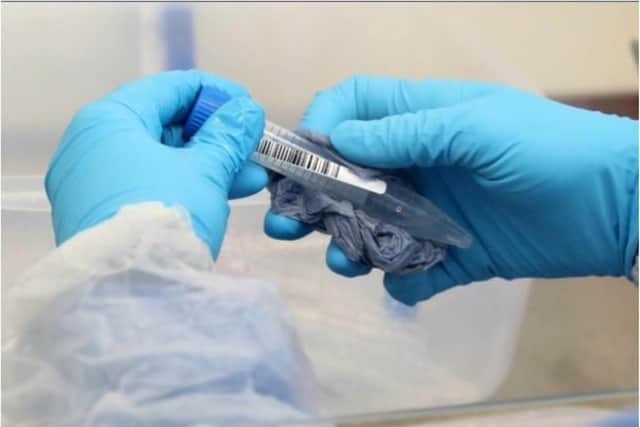Doncaster deaths 'far higher than normal levels,' new figures reveal
and live on Freeview channel 276
But as mortality rates across the country begin to return to pre-pandemic levels, a leading behavioural scientist has warned an imminent reduction in the two-metre social distancing rule is a “disaster waiting to happen".
Office for National Statistics figures show 336 deaths were recorded in Doncaster during May.
Advertisement
Hide AdAdvertisement
Hide AdThat was 69 more than the number recorded in May 2019, a rise of 26%.


That was lower than the average increase of 28% seen across South Yorkshire's four local authorities, however.
Doncaster also saw a jump in fatalities in the previous month, with 174 more deaths recorded compared to April 2019 – an increase of 65%.
It means that in the year to the end of May there were 290 (21%) more deaths than at the same point last year.
Advertisement
Hide AdAdvertisement
Hide AdMinisters and health experts leading the public response to the coronavirus crisis have consistently said excess mortality figures will be the most accurate measure of the overall impact.
This is because they capture deaths that may have been indirectly caused by the pandemic, such as by people not seeking or receiving medical attention for other conditions.
The figures also allow better international comparisons, because they are not affected by differences between the way countries count coronavirus-related deaths.
Across England and Wales, the death toll in May rose by more than 8,000 compared to last year, climbing from 44,290 in 2019 to 52,315 this year, an increase of 18%.
Advertisement
Hide AdAdvertisement
Hide AdBetween the start of January and the end of May, there were 290,157 deaths recorded across the two countries, an increase of 58,581 on the same point in 2019.
The ONS announced at the end of June that the number of deaths registered in England and Wales over the week ending June 19 had fallen below normal levels for the first time since before lockdown was imposed.
It came after Boris Johnson revealed plans to scrap the two-metre social distancing rule in favour of a one-metre plus system, to allow pubs, restaurants and hairdressers to reopen on July 4, on what has been dubbed “independence day”.
But behavioural scientist Professor Susan Michie from University College London has warned the move will effectively amount to ending physical distancing.
Advertisement
Hide AdAdvertisement
Hide AdProf Michie, a member of the Independent Sage expert group set up to shadow the official government advisory group, said the change is a “disaster waiting to happen”, insisting opening indoor areas in pubs is “probably the top of the level of the hierarchy of riskiness”.
She said: “If you look around at people trying to keep two metres apart, most are actually more like one-and-a-half metres, which is significantly safer than one metre.
“If you go down to one metre, actually that is about the distance that people you don’t know and are not intimate with are distant from each other just generally going around and about their business. So basically you have lost the whole concept of social distance.
“And once you have lost the whole concept of social distance, you really are in trouble.”
Advertisement
Hide AdAdvertisement
Hide AdThe new figures come after Doncaster health chiefs rubbished claims of an impending local lockdown saying the borough is ‘nowhere near’ a situation in which a local lockdown would be implemented.
Director of public health, Dr Rupert Suckling, said the most recent available data published every week shows the infection rate is 21.6 per 100,000.
He did concede this has increased from 17.4 but said this has down to a ‘well managed outbreak’ in one care home.
But Dr Suckling said the rate would have to climb to 70 infections per 100,000 before he would consider a local lockdown. He added the infection rate was lower than many other places in England.
Advertisement
Hide AdAdvertisement
Hide Ad“There are a lot of reports currently quoting figures and statistics which could cause confusion and unnecessary concern and worry in our communities in Doncaster,” Dr Suckling said.
“One of the key measures is the number of infections in every 100,000 people - this data now includes positive tests not only from care homes and hospitals but also the wider community.
“Previously, test results I’d seen were not complete in that not all of the community testing results were available to me.
“In Doncaster, we’re not at any impending risk and lockdown our figures are lower than many places in England.
Advertisement
Hide AdAdvertisement
Hide Ad“There’s been speculation about an impending lockdown for Doncaster but this is not the case.
“If a lockdown was put in place, then I would only consider a lockdown if the rate was 70 infections per 100,000 or higher. We are nowhere near that rate.
“The figures are updated on a weekly basis and I’ll monitor them and advise accordingly. We now receive the data we need from Public Health England.
“This does help reconsider our position in Doncaster. Although not live data with it being infections from the previous week, its one element of the data that is improving our response.
“I want to reassure there are no plans to lockdown Doncaster and advise to wash your hands and keep your distance and follow guidance.”